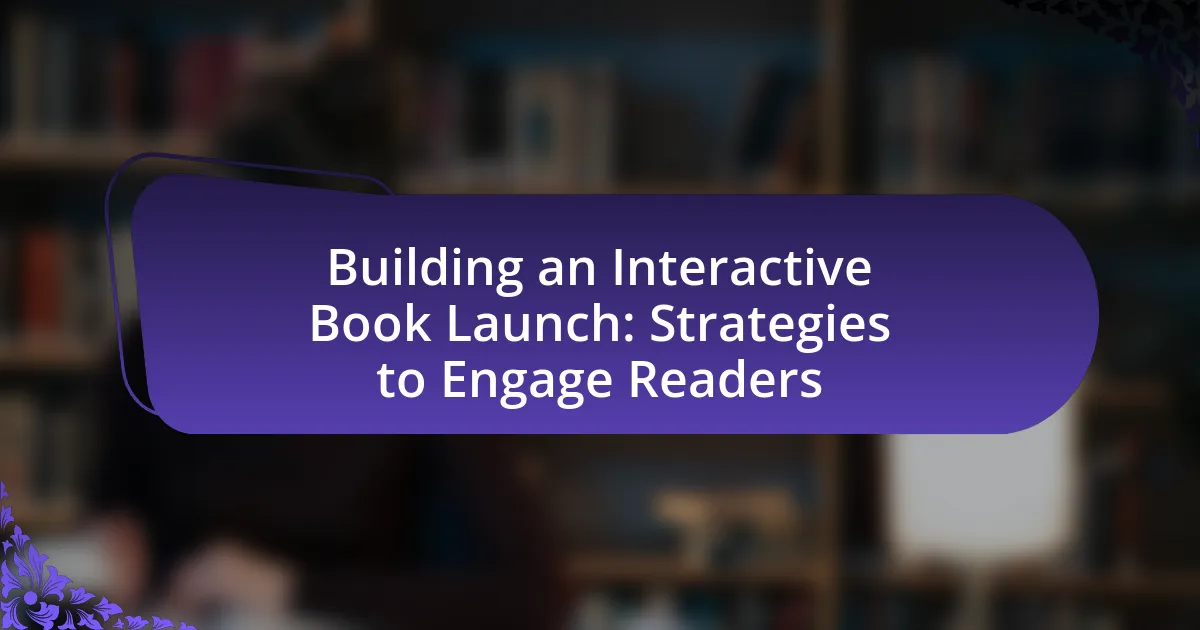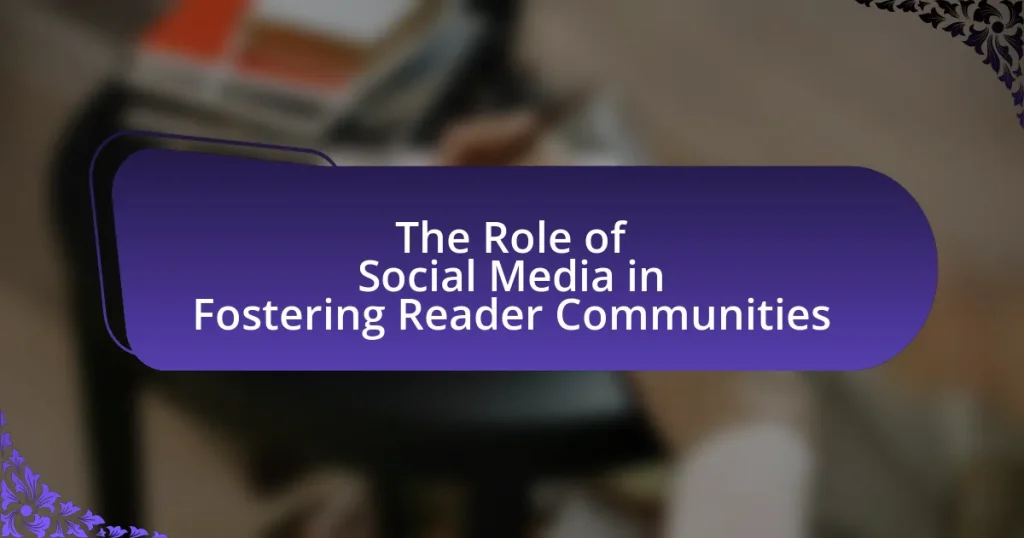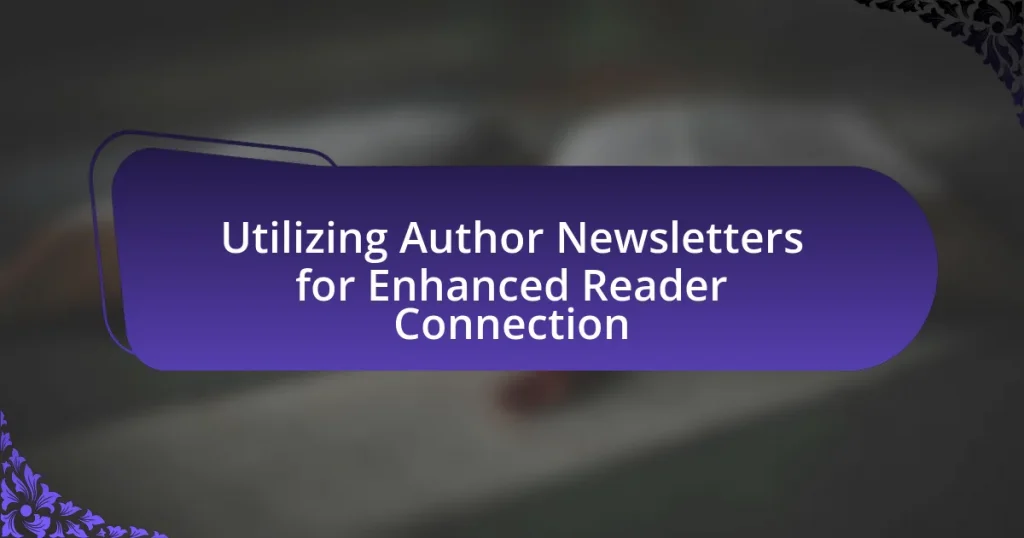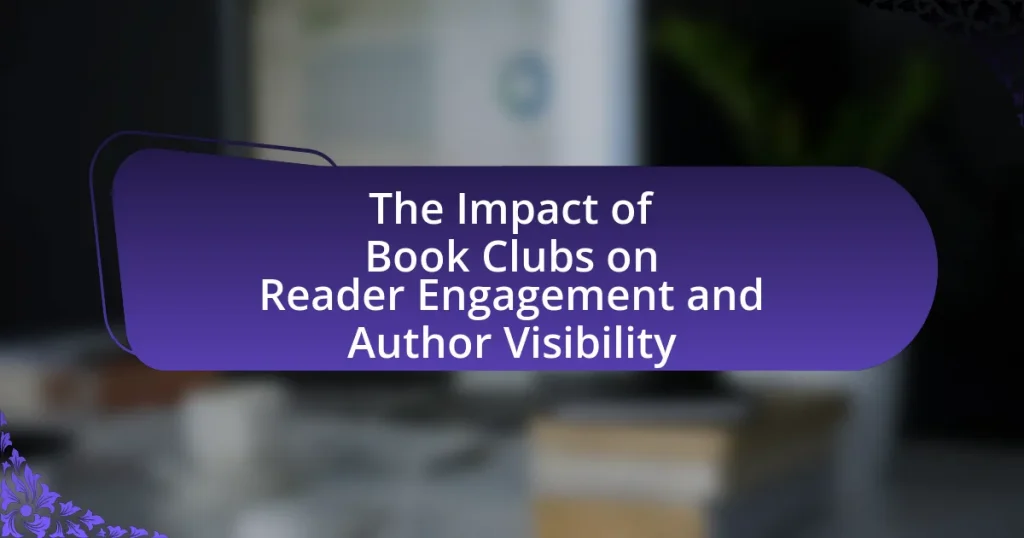An interactive book launch is an event that actively engages readers through live discussions, Q&A sessions, and multimedia presentations, fostering a sense of community and enhancing reader involvement. This article outlines the differences between interactive and traditional book launches, emphasizing the importance of audience participation and the integration of technology and multimedia elements. Key components of a successful interactive launch include engaging content, effective use of social media, and strategies for measuring success. Additionally, the article discusses common pitfalls to avoid, best practices for execution, and methods for maintaining reader interest post-launch, providing a comprehensive guide for authors looking to enhance their book launch experience.
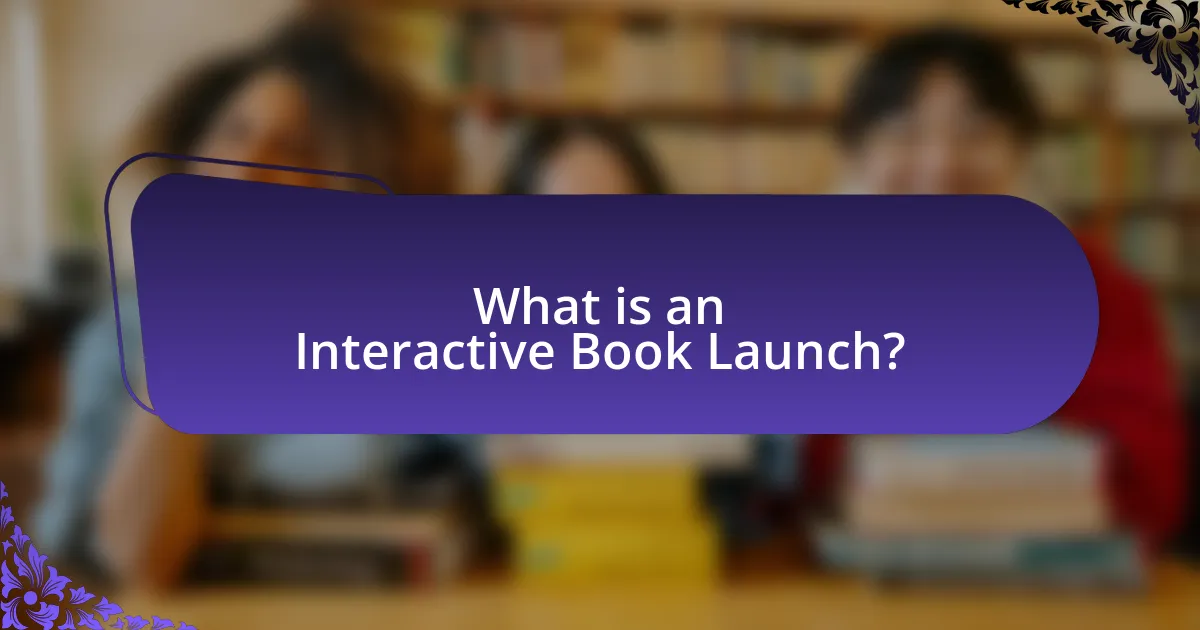
What is an Interactive Book Launch?
An interactive book launch is an event designed to engage readers through various interactive elements, such as live discussions, Q&A sessions, and multimedia presentations. This format allows authors to connect with their audience in real-time, fostering a sense of community and enhancing reader involvement. Research indicates that interactive events can significantly increase audience engagement, with studies showing that 70% of participants feel more connected to the content when they can actively participate.
How does an Interactive Book Launch differ from a traditional launch?
An Interactive Book Launch differs from a traditional launch primarily in its engagement strategies, focusing on active participation rather than passive attendance. In an Interactive Book Launch, authors utilize digital platforms, social media, and live events to create immersive experiences, allowing readers to interact with the content, ask questions, and participate in discussions. This contrasts with traditional launches, which typically involve a straightforward presentation or reading, where the audience’s role is limited to listening. Research indicates that interactive formats can increase audience retention and satisfaction, as seen in studies showing that engagement leads to a 70% higher likelihood of readers sharing the book with others.
What elements make a book launch interactive?
Interactive book launches incorporate elements such as live Q&A sessions, social media engagement, and multimedia presentations. Live Q&A sessions allow readers to ask questions directly to the author, fostering a personal connection and enhancing engagement. Social media engagement, including polls, contests, and live streaming, encourages audience participation and creates a sense of community around the book. Multimedia presentations, such as videos or interactive slideshows, can provide dynamic content that captures attention and enhances the overall experience. These elements collectively create an immersive environment that encourages reader involvement and feedback, making the launch more memorable and impactful.
Why is interactivity important for engaging readers?
Interactivity is important for engaging readers because it enhances their involvement and investment in the content. Engaged readers are more likely to retain information, share their experiences, and develop a deeper connection with the material. Research indicates that interactive elements, such as quizzes, polls, and multimedia content, can increase reader retention by up to 60% compared to traditional formats. This heightened engagement leads to a more memorable experience, fostering a sense of community and encouraging readers to participate actively in discussions and feedback.
What are the key components of an Interactive Book Launch?
The key components of an Interactive Book Launch include engaging content, audience participation, and multimedia elements. Engaging content captures the audience’s attention through compelling storytelling and relevant themes related to the book. Audience participation is facilitated through live Q&A sessions, polls, and discussions, allowing readers to interact directly with the author and each other. Multimedia elements, such as videos, social media integration, and interactive websites, enhance the experience by providing diverse ways for readers to connect with the book’s themes and characters. These components collectively create a dynamic environment that fosters reader engagement and excitement around the book release.
How can social media be utilized in the launch process?
Social media can be utilized in the launch process by creating targeted campaigns that engage potential readers and build anticipation. Platforms like Facebook, Instagram, and Twitter allow authors to share teasers, behind-the-scenes content, and countdowns to the launch date, effectively generating buzz. For instance, a study by the Pew Research Center indicates that 69% of adults in the U.S. use social media, making it a powerful tool for reaching a wide audience. Additionally, leveraging user-generated content and encouraging followers to share their excitement can amplify reach and foster community engagement around the book launch.
What role does audience participation play in the launch?
Audience participation plays a crucial role in the launch by enhancing engagement and creating a sense of community among readers. When audiences actively participate, they contribute to the excitement and momentum of the launch, which can lead to increased visibility and sales. For instance, interactive elements such as live Q&A sessions, polls, and social media challenges can foster a deeper connection between the author and the audience, encouraging word-of-mouth promotion. Research indicates that events with high audience involvement can see up to a 30% increase in attendance and engagement metrics, demonstrating the tangible benefits of participation in a launch setting.
What goals should be set for an Interactive Book Launch?
The primary goals for an Interactive Book Launch should include maximizing reader engagement, increasing book sales, and building a community around the book. Maximizing reader engagement can be achieved through interactive elements such as live Q&A sessions, polls, and multimedia content that encourages participation. Increasing book sales is essential, and this can be supported by offering exclusive launch-day promotions or bundles. Building a community involves creating a space for readers to connect, share their thoughts, and discuss the book, which can be facilitated through social media groups or dedicated forums. These goals are validated by the fact that successful book launches often leverage interactive strategies to enhance reader involvement and drive sales, as evidenced by case studies of authors who have effectively utilized these methods.
How can success be measured during the launch?
Success during a book launch can be measured through key performance indicators such as sales figures, audience engagement metrics, and social media reach. Sales figures provide a direct measure of financial success, indicating how well the book is received in the market. Audience engagement metrics, including the number of attendees at launch events, participation in online discussions, and feedback collected through surveys, reflect the level of reader interest and interaction. Social media reach, quantified by the number of shares, likes, and comments, demonstrates the effectiveness of promotional efforts and the book’s visibility. Collectively, these metrics offer a comprehensive view of the launch’s success, allowing authors and publishers to assess their strategies and make informed decisions for future projects.
What are common pitfalls to avoid in setting goals?
Common pitfalls to avoid in setting goals include setting vague objectives, failing to establish measurable criteria, and neglecting to consider time constraints. Vague objectives lead to confusion and lack of direction, making it difficult to assess progress. For instance, a goal like “improve reader engagement” lacks specificity; instead, a measurable goal would be “increase newsletter sign-ups by 20% in three months.” Additionally, without measurable criteria, it becomes impossible to track success or make necessary adjustments. Lastly, neglecting time constraints can result in procrastination and missed opportunities, as goals without deadlines often lack urgency and focus.

How can technology enhance an Interactive Book Launch?
Technology can enhance an Interactive Book Launch by facilitating real-time engagement and immersive experiences for readers. For instance, live streaming platforms allow authors to connect with audiences globally, enabling Q&A sessions and discussions that foster community interaction. Additionally, augmented reality (AR) can be integrated into the book, providing readers with interactive elements that enrich the reading experience. According to a study by the Pew Research Center, 72% of readers expressed interest in interactive features that enhance storytelling, demonstrating the demand for such technological integration. Furthermore, social media tools can amplify reach and engagement, allowing for targeted marketing campaigns that attract specific reader demographics.
What tools are available for creating an engaging launch experience?
Tools available for creating an engaging launch experience include social media platforms, email marketing software, live streaming services, and interactive content creation tools. Social media platforms like Facebook and Instagram facilitate real-time engagement and community building, while email marketing software such as Mailchimp allows for targeted communication with potential readers. Live streaming services like Zoom or YouTube Live enable authors to host virtual launch events, fostering direct interaction with audiences. Additionally, interactive content creation tools like Canva or Typeform can be used to design engaging visuals and surveys that enhance reader participation. These tools collectively enhance the launch experience by promoting interaction, building anticipation, and fostering a sense of community among readers.
How can virtual events be integrated into the launch?
Virtual events can be integrated into the launch by hosting online book readings, Q&A sessions, and interactive discussions with the author. These events allow for real-time engagement with a global audience, enhancing accessibility and participation. For instance, platforms like Zoom or Facebook Live can facilitate live interactions, enabling readers to ask questions and share their thoughts instantly. Research indicates that virtual events can increase audience reach by up to 70%, making them a powerful tool for book launches.
What platforms are best for hosting interactive content?
The best platforms for hosting interactive content include WordPress, Wix, and Medium. WordPress offers extensive plugins for interactive features, allowing users to create quizzes, polls, and multimedia content easily. Wix provides a user-friendly interface with drag-and-drop capabilities, enabling the integration of interactive elements like forms and animations. Medium, while primarily a blogging platform, supports interactive storytelling through embedded multimedia and reader engagement features. These platforms are widely recognized for their capabilities in enhancing user interaction and engagement, making them suitable choices for hosting interactive content.
How can multimedia elements be incorporated into the launch?
Multimedia elements can be incorporated into the launch by utilizing videos, audio clips, interactive graphics, and social media integrations. For instance, a promotional video can showcase the book’s themes and characters, while audio clips of the author reading excerpts can enhance engagement. Interactive graphics, such as infographics or quizzes related to the book’s content, can provide an immersive experience for potential readers. Additionally, leveraging social media platforms to share multimedia content can increase visibility and encourage audience interaction, as studies show that posts with multimedia elements receive higher engagement rates compared to text-only posts.
What types of multimedia can enhance reader engagement?
Multimedia types that can enhance reader engagement include videos, interactive graphics, podcasts, and infographics. Videos can capture attention and convey complex information quickly, as studies show that viewers retain 95% of a message when they watch it compared to 10% when reading text. Interactive graphics allow readers to explore content dynamically, increasing their involvement and understanding. Podcasts provide an auditory experience that can reach audiences during their daily routines, fostering a personal connection. Infographics present data visually, making it easier to digest and share, which can lead to higher engagement rates.
How do visuals and audio contribute to the overall experience?
Visuals and audio significantly enhance the overall experience by engaging multiple senses, which increases retention and emotional connection. Research indicates that incorporating visuals can improve information retention by up to 65%, while audio elements can evoke emotional responses that deepen engagement. For instance, a study published in the Journal of Educational Psychology found that multimedia presentations, which combine visuals and audio, lead to better learning outcomes compared to text-only formats. This synergy between visuals and audio creates a more immersive environment, making the content more memorable and impactful for the audience.
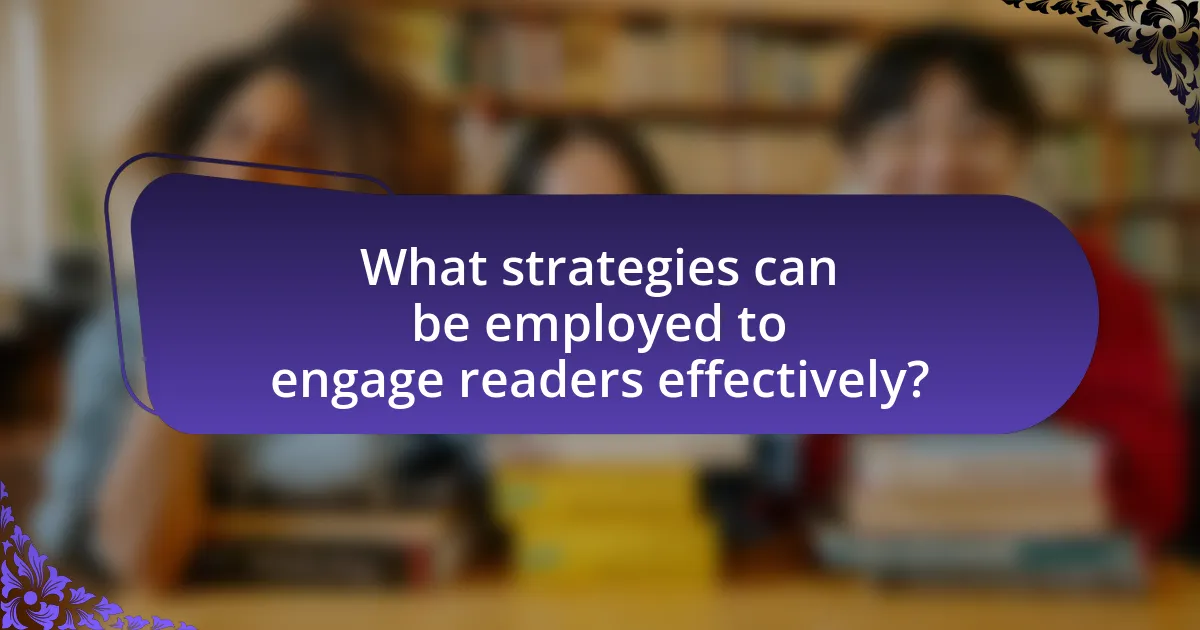
What strategies can be employed to engage readers effectively?
To engage readers effectively, authors can employ strategies such as interactive content, personalized communication, and community building. Interactive content, such as quizzes or polls related to the book’s themes, encourages reader participation and investment in the material. Personalized communication, including tailored emails or social media interactions, fosters a sense of connection between the author and the reader. Community building through platforms like book clubs or online forums creates a space for readers to discuss and share their thoughts, enhancing their overall experience. These strategies have been shown to increase reader engagement, as evidenced by studies indicating that interactive elements can boost reader retention and satisfaction.
How can pre-launch activities build anticipation?
Pre-launch activities can build anticipation by creating excitement and engagement among potential readers. These activities, such as teaser campaigns, cover reveals, and social media interactions, generate buzz and foster a sense of community. For instance, a study by the Book Industry Study Group found that 70% of readers are influenced by pre-launch marketing efforts, indicating that effective strategies can significantly enhance interest in a book before its release. Engaging potential readers through exclusive content or early access can further amplify this anticipation, leading to increased sales and a stronger launch impact.
What types of teasers can be used to attract interest?
Various types of teasers can be used to attract interest, including sneak peeks, character introductions, and plot hints. Sneak peeks provide brief excerpts from the book, allowing potential readers to sample the writing style and tone. Character introductions can feature engaging visuals or descriptions of key characters, creating a connection with the audience. Plot hints offer intriguing questions or scenarios that pique curiosity about the storyline. These strategies are effective because they create anticipation and encourage readers to seek more information about the book.
How can reader feedback be solicited before the launch?
Reader feedback can be solicited before the launch by utilizing surveys, focus groups, and beta reading programs. Surveys can be distributed through email or social media platforms to gather opinions on cover designs, content, and themes. Focus groups allow for in-depth discussions with selected readers, providing qualitative insights into their preferences. Beta reading programs involve sharing a draft of the book with a select group of readers who can provide feedback on the narrative, pacing, and character development. These methods have been shown to enhance reader engagement and improve the final product, as evidenced by successful authors who have implemented similar strategies to refine their work prior to publication.
What interactive activities can be included during the launch?
Interactive activities that can be included during the launch of a book are live Q&A sessions, interactive polls, and virtual book tours. Live Q&A sessions allow readers to engage directly with the author, fostering a personal connection and encouraging discussion about the book’s themes. Interactive polls can be used to gauge reader opinions on various topics related to the book, enhancing engagement and making the audience feel involved in the launch process. Virtual book tours can provide an immersive experience, allowing readers to explore settings or themes from the book through multimedia presentations. These activities not only enhance reader engagement but also create a dynamic atmosphere that can lead to increased interest and sales.
How can live Q&A sessions enhance reader interaction?
Live Q&A sessions enhance reader interaction by providing a direct platform for real-time engagement between authors and their audience. This format allows readers to ask questions, share thoughts, and receive immediate feedback, fostering a sense of community and connection. Research indicates that interactive formats, such as live Q&A, can increase audience participation by up to 70%, as they encourage active involvement rather than passive consumption. Furthermore, these sessions can help authors gauge reader interests and preferences, enabling them to tailor future content more effectively.
What role do giveaways and contests play in engagement?
Giveaways and contests significantly enhance engagement by incentivizing participation and interaction among audiences. These activities create excitement and anticipation, leading to increased visibility and interaction with the brand or product. For instance, a study by Tailwind found that contests can increase engagement rates by up to 34%, as participants are motivated to share the contest with their networks, thereby expanding reach and fostering community involvement.
What follow-up strategies can maintain reader interest post-launch?
To maintain reader interest post-launch, authors should implement follow-up strategies such as engaging readers through interactive content, personalized communication, and ongoing community building. Engaging readers with interactive content, such as quizzes or polls related to the book, can enhance their connection to the material and encourage continued discussion. Personalized communication, including tailored emails or messages that address reader feedback or questions, fosters a sense of belonging and investment in the author’s work. Additionally, building a community through social media groups or forums allows readers to share their thoughts and experiences, creating a dynamic environment that keeps the conversation alive. These strategies are supported by research indicating that interactive engagement significantly increases reader retention and satisfaction, as evidenced by a study published in the Journal of Interactive Marketing, which found that personalized interactions can boost customer loyalty by up to 30%.
How can ongoing communication be established with readers?
Ongoing communication with readers can be established through regular updates and interactive platforms. Authors can utilize social media, newsletters, and dedicated websites to share insights, respond to reader inquiries, and foster a sense of community. For instance, a study by the Pew Research Center indicates that 69% of adults in the U.S. use social media, making it an effective channel for real-time engagement. Additionally, creating a mailing list allows authors to send personalized content directly to readers, enhancing connection and feedback opportunities.
What methods can be used to gather feedback after the launch?
Surveys and questionnaires are effective methods to gather feedback after a book launch. These tools allow authors to collect structured responses from readers regarding their experiences and opinions about the book. For instance, a post-launch survey can include questions about the book’s content, pacing, and overall satisfaction, enabling authors to quantify reader feedback. Additionally, social media polls and direct outreach via email can provide immediate insights into reader reactions. Research indicates that 70% of consumers prefer to provide feedback through surveys, highlighting their effectiveness in capturing reader sentiment.
What are best practices for executing a successful Interactive Book Launch?
To execute a successful Interactive Book Launch, authors should focus on creating engaging content and utilizing multiple platforms for promotion. Engaging content includes interactive elements such as quizzes, polls, and live Q&A sessions that encourage reader participation. Utilizing platforms like social media, email newsletters, and dedicated websites can amplify reach and foster community engagement.
For instance, a study by the Book Industry Study Group indicates that interactive marketing strategies can increase reader engagement by up to 70%. Additionally, hosting virtual events or webinars allows authors to connect directly with their audience, enhancing the overall launch experience. These practices not only promote the book effectively but also build a loyal reader base.
How can authors ensure a seamless experience for participants?
Authors can ensure a seamless experience for participants by meticulously planning and organizing the event. This includes providing clear communication regarding event details, such as date, time, and platform, which helps participants prepare adequately. Additionally, authors should test all technology in advance to avoid technical issues during the event, as studies show that 70% of virtual event failures are due to technical glitches. Engaging participants through interactive elements, such as Q&A sessions or polls, further enhances their experience by fostering involvement and connection.
What common mistakes should be avoided during the launch?
Common mistakes to avoid during a book launch include inadequate market research, poor timing, and lack of a clear marketing strategy. Inadequate market research can lead to targeting the wrong audience, resulting in low engagement and sales. Poor timing, such as launching during holidays or major events, can overshadow the book and reduce visibility. A lack of a clear marketing strategy can result in ineffective promotional efforts, failing to generate buzz or reach potential readers. These mistakes can significantly hinder the success of the launch, as evidenced by numerous case studies where authors who conducted thorough market research and planned their launches strategically achieved higher sales and reader engagement.
